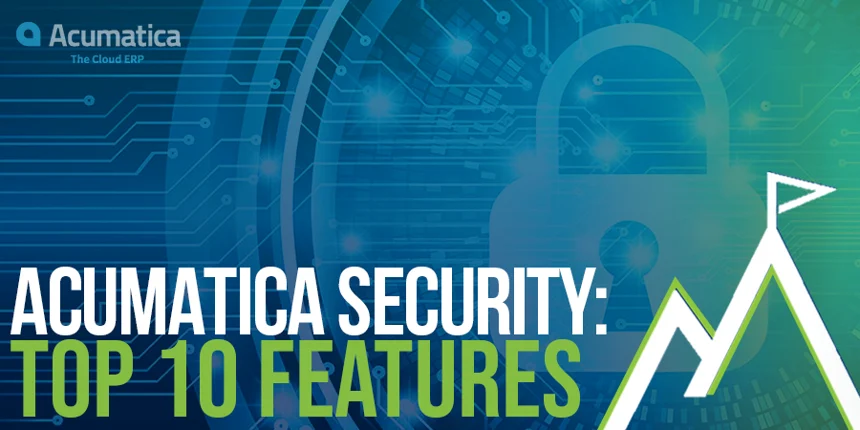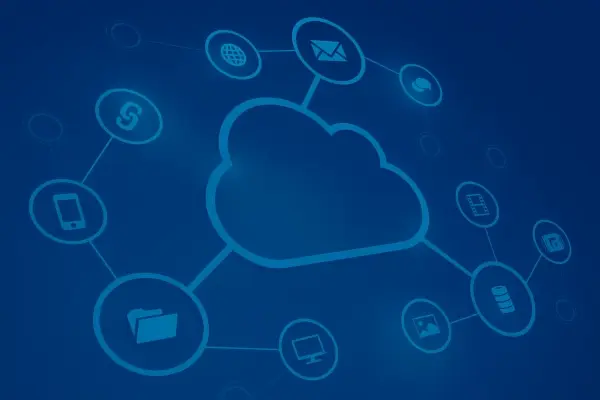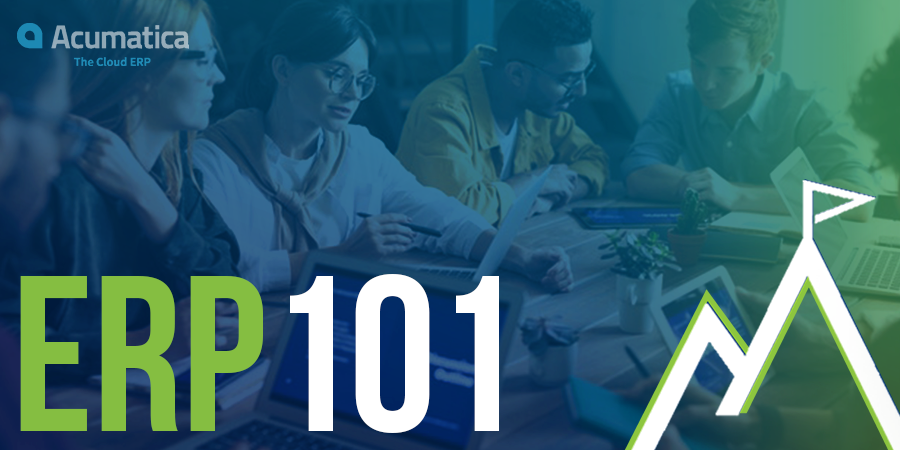10 Signs Your Accounting ERP Software Is Holding You Back
Updated 9/23/25
4 min read
The Milestone Team 10/7/25 2:57 AM

Table of Contents
Updated 10/6/2025
Cyberattacks don’t just target large corporations anymore. Nearly half of all data breaches now affect small and mid-sized businesses — organizations that often lack large IT departments but handle the same sensitive information as enterprise firms.
Your ERP system is at the center of your operations, managing financial records, customer data, inventory, payroll, and more. If that data is compromised, the damage can be severe — from lost revenue and compliance penalties to long-term brand impact.
That’s why cloud ERP security is so important. Acumatica was designed with security built into every layer — from user access to data encryption — giving businesses a secure, modern ERP system that protects critical information without adding complexity.
Here are 10 ways Acumatica safeguards your business data and helps prevent security incidents.
Every company has unique requirements for data security and compliance. Acumatica gives you the flexibility to choose your deployment method while maintaining full protection and compliance.
You can host Acumatica in:
Public Cloud (SaaS): Secure, scalable, and fully managed environments on Amazon Web Services (AWS).
Private Cloud: Controlled infrastructure that your IT team manages directly.
On-Premise: Installed on local servers for organizations requiring complete data ownership.
This flexibility helps companies align with strict industry regulations and compliance mandates.
Active Compliance Certifications:
Acumatica’s platform and preferred hosting environments adhere to multiple compliance frameworks, including SOC 1/2/3, GDPR, HIPAA, PCI DSS, and ITAR. These certifications validate Acumatica’s controls and make it easier for businesses in regulated industries to meet reporting and audit requirements.
Passwords remain one of the top attack vectors in any ERP system. Acumatica strengthens this first line of defense with multiple authentication options and administrative controls.
Administrators can:
Require strong passwords with complexity rules.
Schedule mandatory password resets.
Restrict access by IP address or physical location.
Set timeouts for inactive sessions.
Monitor login patterns for suspicious behavior.
These security measures make it much harder for unauthorized users to gain access while helping organizations enforce consistent data security standards.
Even the best passwords can be compromised, which is why multi-factor authentication (MFA) is now a cornerstone of modern cloud ERP security.
Acumatica supports MFA across both web and mobile access. After entering a password, users verify their identity with a secondary method such as a text code, authenticator app, or device-based prompt.
This extra step blocks over 99% of password-based attacks, dramatically reducing the risk of unauthorized entry and protecting sensitive data from credential theft.
Acumatica processes all business data and application logic on secure servers, never storing sensitive information in web browsers or on user devices. This prevents exposure from local malware, device theft, or cached session data.
For remote or mobile access, all traffic is encrypted through HTTPS/TLS, ensuring data stays private between the user and the ERP system.
Note: For private cloud or on-premise setups, organizations can add their own VPN for extra security if desired.
This approach keeps data secure for users working from the office, home, or field — without adding unnecessary complexity.
When data moves between Acumatica and a user’s browser or mobile device, it’s protected by TLS 1.3, the most advanced encryption standard available. This ensures that:
Communication between users and servers cannot be intercepted or altered.
API integrations with other platforms (CRM, banking, payroll) remain secure.
Sessions stay private, even over public Wi-Fi.
Layered Security for Integrations and APIs:
All third-party integrations and APIs in Acumatica use secure authentication and encrypted communication. Whether you’re connecting to a payment gateway or a project management tool, data exchange stays fully protected.
Security doesn’t end once data reaches the server. Acumatica encrypts critical information — such as credit card numbers, employee details, and payroll records — using AES-256 encryption, one of the strongest commercial standards.
Administrators can define additional fields to encrypt based on organizational needs. Even if a backup or database copy were compromised, the data inside remains unreadable without the proper decryption keys.
This ensures data integrity and data safety, even in the unlikely event of a breach.
Access management is one of the most effective ways to prevent security incidents. Acumatica uses role-based access control (RBAC) so employees only see the parts of the system relevant to their job.
Examples include:
Finance teams can access general ledger accounts and reports.
HR staff can manage payroll and personnel information.
Sales teams can view customers, orders, and quotes.
By defining clear access levels, Acumatica limits unnecessary exposure and simplifies administration. Roles can be customized, cloned, or adjusted as responsibilities change — a major advantage in maintaining ongoing ERP security.
Acumatica takes access control a step further with row-level security and restriction groups. This allows organizations to limit visibility at a very granular level.
For instance:
Branch managers only see data for their specific location.
Department leaders see only budgets or accounts relevant to their division.
Sales representatives see only their assigned customer list.
This detailed level of control prevents unauthorized personnel from viewing data outside their scope, reducing both accidental exposure and insider risk.
Security should be practical, not burdensome. Acumatica’s permission-based menus automatically tailor what each user sees when they log in.
Benefits include:
Reduced clutter — users only see the modules and reports they need.
Lower risk of accidental data access or edits.
Easier training and a shorter learning curve for new users.
This streamlined interface not only enhances productivity but also strengthens application security by reducing opportunities for human error.
Good security is proactive, not reactive. Acumatica offers detailed audit logs and continuous monitoring tools that give administrators visibility into user activity, system changes, and potential vulnerabilities.
Audit trails record:
All login attempts (successful and failed).
Configuration or permission changes.
Data edits and deletions.
Integration activity across connected systems.
Zero-Trust Security Model:
Acumatica follows a zero-trust approach — every access request is authenticated, authorized, and logged. Instead of assuming trust within the network, Acumatica continuously validates user actions to minimize both external and internal risks.
This combination of logging, monitoring, and zero-trust validation helps organizations detect and respond to suspicious activities before they become security incidents.
Security isn’t just about prevention — it’s also about resilience.
Disaster Recovery and Redundancy:
Acumatica SaaS deployments include built-in disaster recovery with offsite backups and geographic redundancy. If a server fails or a catastrophic event occurs, your ERP data can be restored quickly and operations continue with minimal disruption.
Continuous Updates and Patch Management:
SaaS customers benefit from automatic updates and security patches. Acumatica continuously tests and deploys improvements, ensuring the system stays ahead of evolving cyber threats without requiring manual maintenance.
Acumatica’s cloud ERP security combines advanced encryption, continuous monitoring, and built-in disaster recovery to give today’s businesses the protection they can rely on. It meets strict industry standards, supports regulatory requirements, and provides a trusted foundation for long-term growth.
With Acumatica, security isn’t an extra layer — it’s part of the framework that keeps your business stable, your data protected, and your team moving forward with confidence.
To learn more about Acumatica or to schedule a FREE demo or software consultation, Contact us today!

Updated 9/1/25 Cloud ERP isn’t just another business tool—it’s the cornerstone of digital transformation. The phrase gets tossed around often, but...

ERP (Enterprise Resource Planning)—sometimes called business management software or even advanced accounting software—is the system that keeps modern...